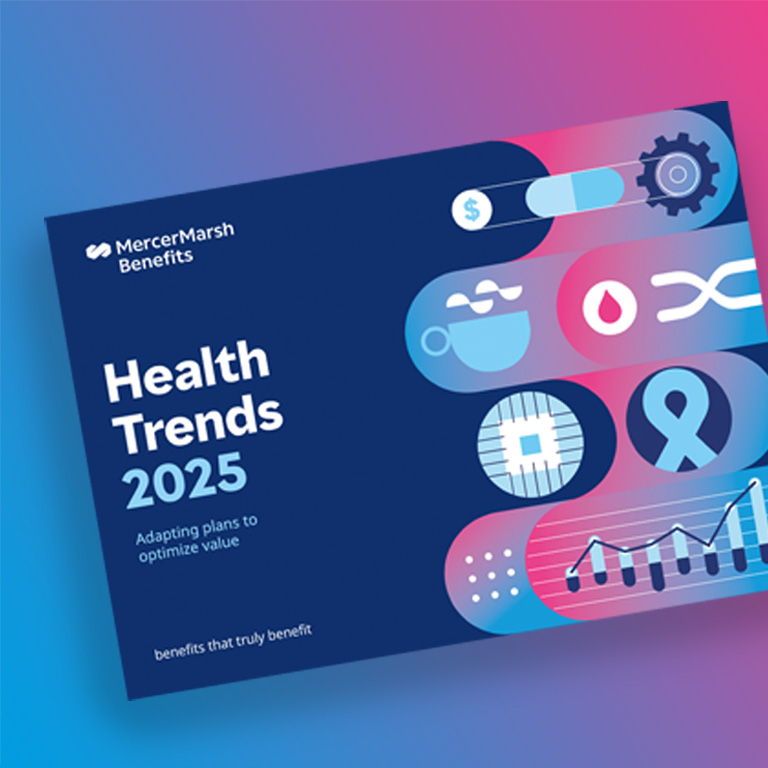Top drivers of healthcare costs
- New legislation and regulatory changes
Organisations in countries where employer-sponsored healthcare is mandatory, such as the UAE (only in the emirates of Abu Dhabi and Dubai) and KSA, should always be aware of the legislation concerning medical insurance and the provision of employee benefits, as regulatory changes could impact medical costs. For example, in KSA, Article 11 of the Cooperative Health Insurance Law stated that all government healthcare providers accredited by the Council for Cooperative Health Insurance would become part of the minimum medical network[2]. The resulting expectation was that claims costs would increase for medical insurers for lower networks and populations in remote areas. Mandatory health insurance is being implemented in Qatar, Bahrain and Oman between the years 2022 and 2023, and we are expecting this to impact employers who have previously not carried this cost. Find out more in our Insights report about what to expect from regulatory changes this year.
In other countries such as South Africa where employer-sponsored healthcare is not mandatory, the financial pressure of rising healthcare costs falls mostly on the employees. Many organisations in South Africa require permanent, full time employees to have health insurance, therefore increases in private healthcare that exceed salary increases can have a significant impact on the financial, physical and mental health of employees. This could in turn expose the employer to potential people risks such as increases in absenteeism and presenteeism, loss of productivity and engagement, and errors in the workplace. Organisations need to be aware of these risks as they may lead to financial and legal repercussions for the employer.
- Increasing claims activity due to Covid-19
During the pandemic, many organisations experienced a significant decrease in claims activity for non-Covid related conditions due to lockdown restrictions and cancellation of elective procedures. However, claims activity now seems to be returning to pre-pandemic levels and 62% of insurers surveyed across MEA expect claims to continue rising and to actually exceed pre-Covid-19 levels. Employers must prepare for this rebound in claims activity and the resulting increase in medical costs by re-evaluating their cost containment strategies.
While Covid-19 was a major driver of claims frequency and cost globally, across MEA the impact was less significant in countries like KSA where the Government covered all Covid-19 related claims. In the UAE, regulators mandated Covid-19 coverage for both inpatient and outpatient claims and insurers had to adapt policy wording to include this cover. Claims activity did however increase in relation to mental health offerings, with insurers reporting an increase in the use of wellness benefits and Employee Assistance Programs (EAP). A well-designed benefit plan can help employers balance these costs while still providing valuable benefits to their employees.
- Increasing claims activity due to non-communicable diseases
Non-communicable diseases are chronic conditions that aren’t passed on from person to person and are generally related to lifestyle factors such as physical activity, dietary habits and self-care. Chronic conditions continue to be one of the key contributing factors of increasing medical costs for employers and one of the primary drivers of claims activity. The top conditions in MEA that drive claims in both frequency and cost are respiratory conditions (i.e. asthma, chronic obstructive pulmonary disorder), diseases of the circulatory system (i.e. hypertension, acute myocardial infarction), endocrine and metabolic diseases (i.e. diabetes, high blood pressure), cancer, and musculoskeletal conditions (i.e. arthritis, scoliosis).
For employers, these chronic conditions not only contribute to rising medical costs in the case of employer-sponsored healthcare, but also contribute to people risks such as absenteeism and low productivity. Educating employees on the importance of proper lifestyle habits, self-care and preventative care, and digital health offerings such as telemedicine, could help to manage these conditions and reduce risk for the employer.
While there are still many uncertainties surrounding Covid-19 and its impact on the health and benefits landscape, employers can take action now to prepare for the future and minimise their exposure to people risk. Ensuring that their benefit plan design takes into consideration how health and benefits have changed and what may still come into effect this year will be key to managing cost while maintaining employee health and well-being.
[1] MMB Health Trends
[2] MMB Health Trends Insights

